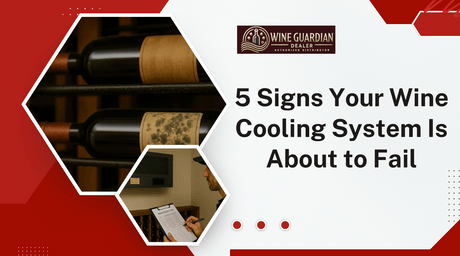
5 Signs Your Wine Cooling System Is About to Fail
Don’t wait for a costly surprise. Wine Guardian Dealer breaks down the top 5 signs your wine cooling system may be failing — and how to fix it before damage...
Jim Hopper
In Stock & Ready to Ship – Order Your Wine Cooling System Today!
Free Wine Cellar Expert Consultation | 📞 Call 1-800-260-1712
Start with a free expert consult—cooling system sizing, racking options, and no upsells.
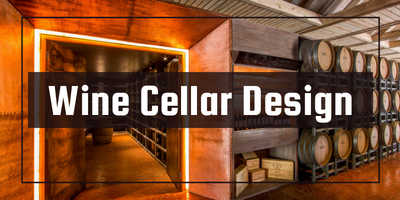
Build your dream wine cellar—without costly mistakes or guesswork.
By Jim Hopper, Wine Cooling Expert
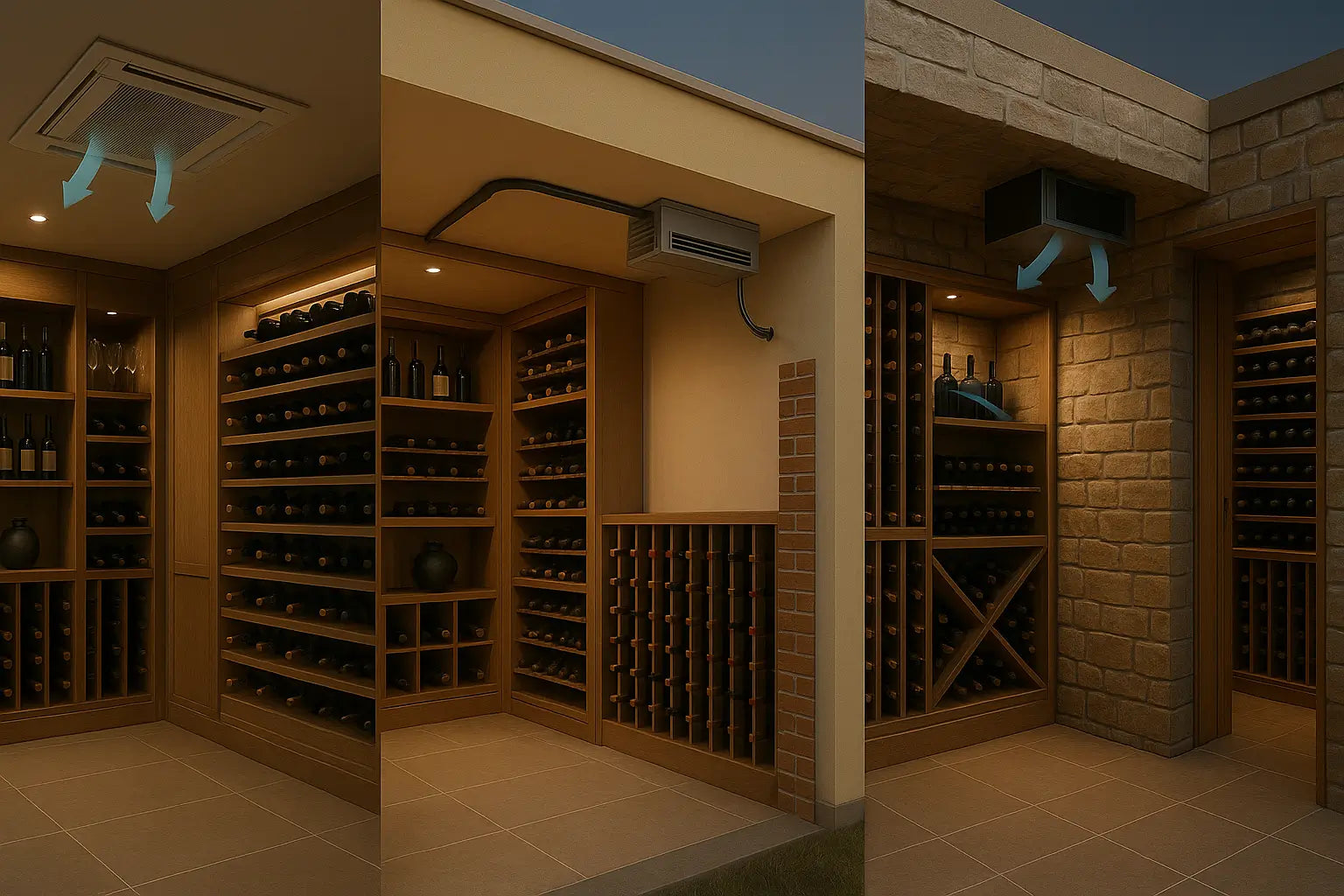
Choosing the right wine cooling system starts with understanding your options. If you're new to cellar climate control, start with our Wine Cooling Systems Overview to understand the basics. Before you commit to a unit, it’s important to compare the three main system types used in wine cellars today. Knowing the difference between ducted, split, and self-contained systems is essential to making an informed decision.
Each system has its strengths, limitations, and ideal use case — and the wrong fit can mean temperature swings, noise complaints, or costly modifications down the line.
Let’s break down each system to help you decide what works best for your space, noise preferences, and installation setup.
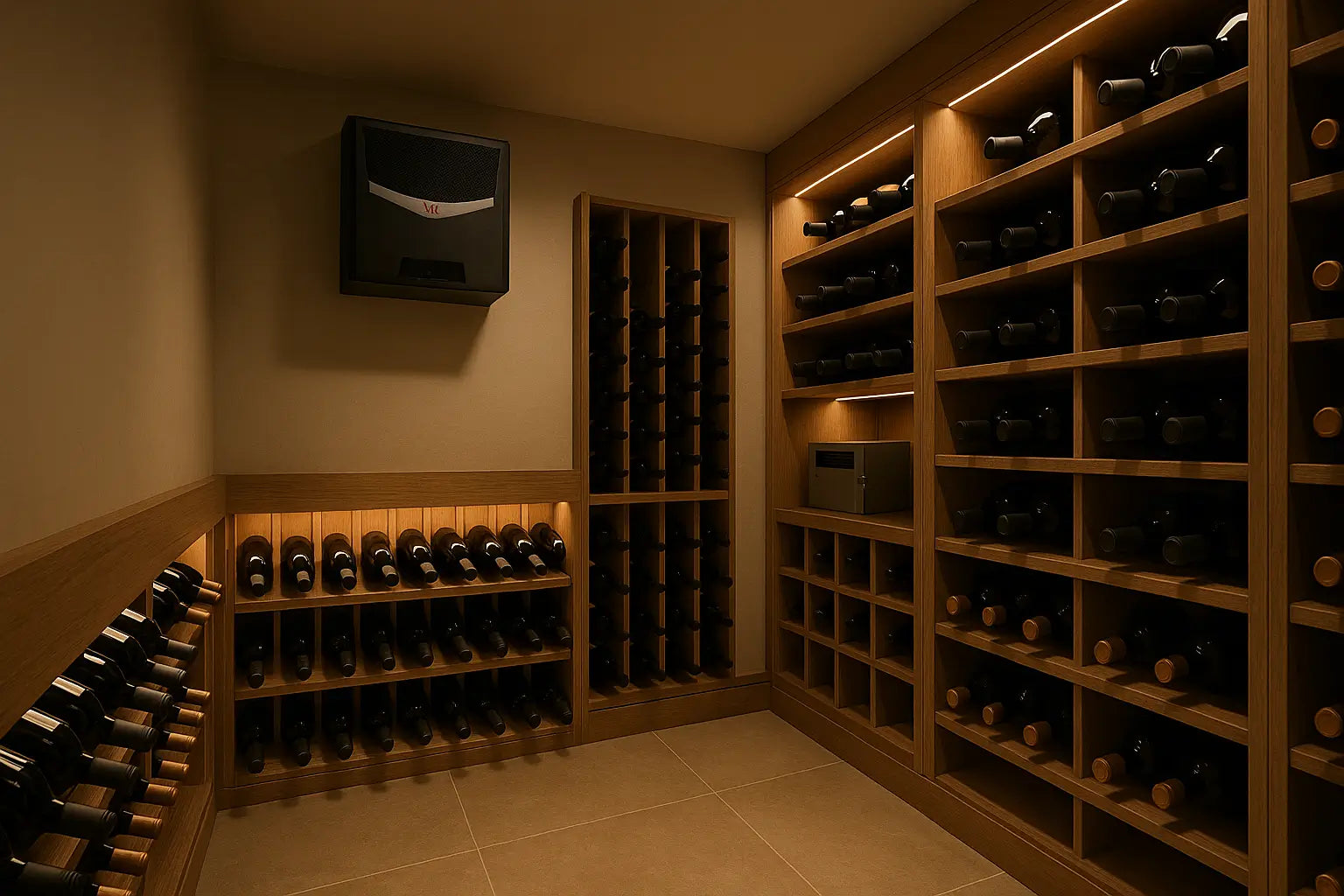
These all-in-one units are mounted through a wall and house both the evaporator and condenser. They are relatively simple to install and work best in small-to-medium wine rooms.
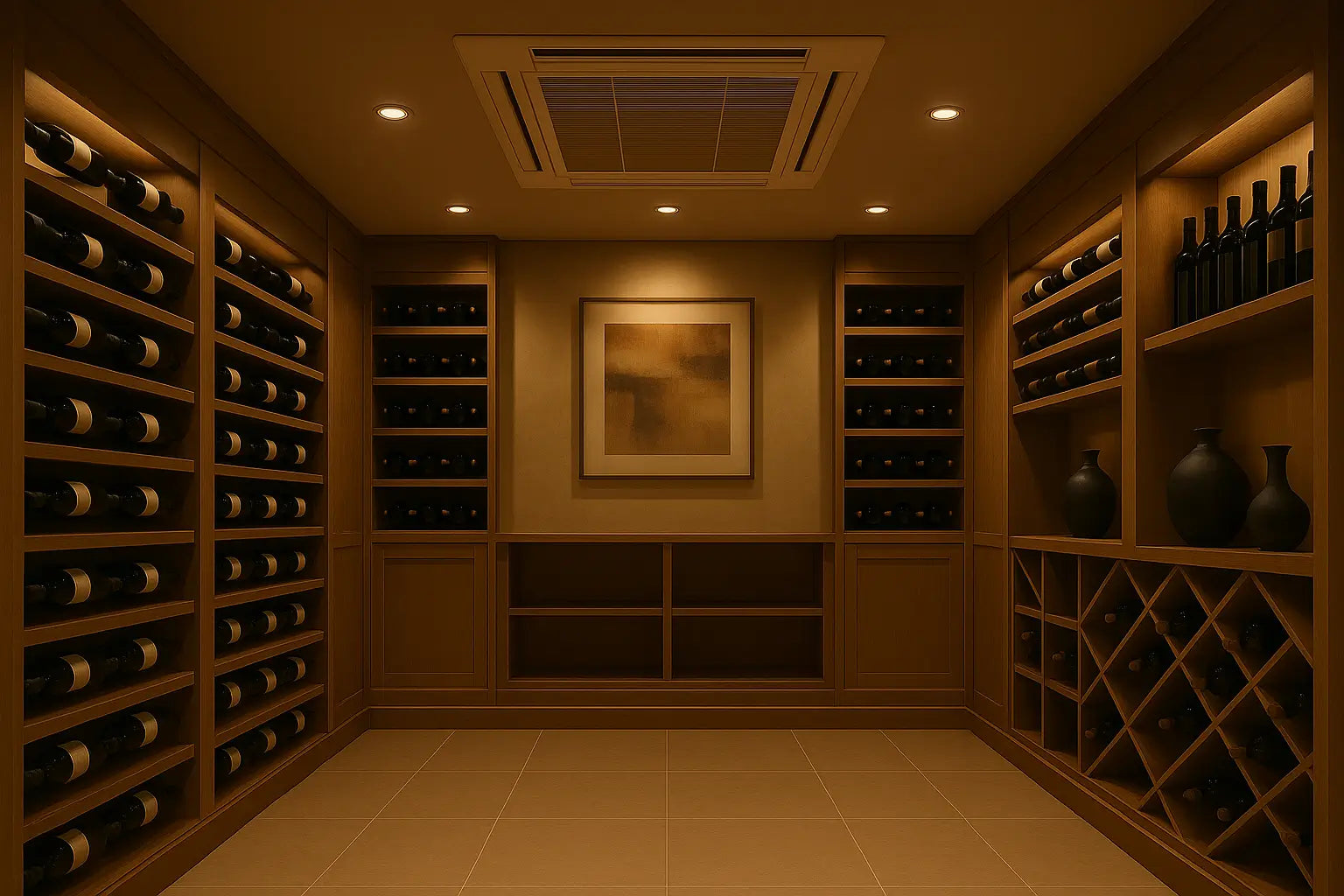
Ducted systems allow the cooling unit to be placed in a remote location, while cool air is delivered through ductwork into the cellar.
➡️ Learn more in how wine cellar cooling systems work
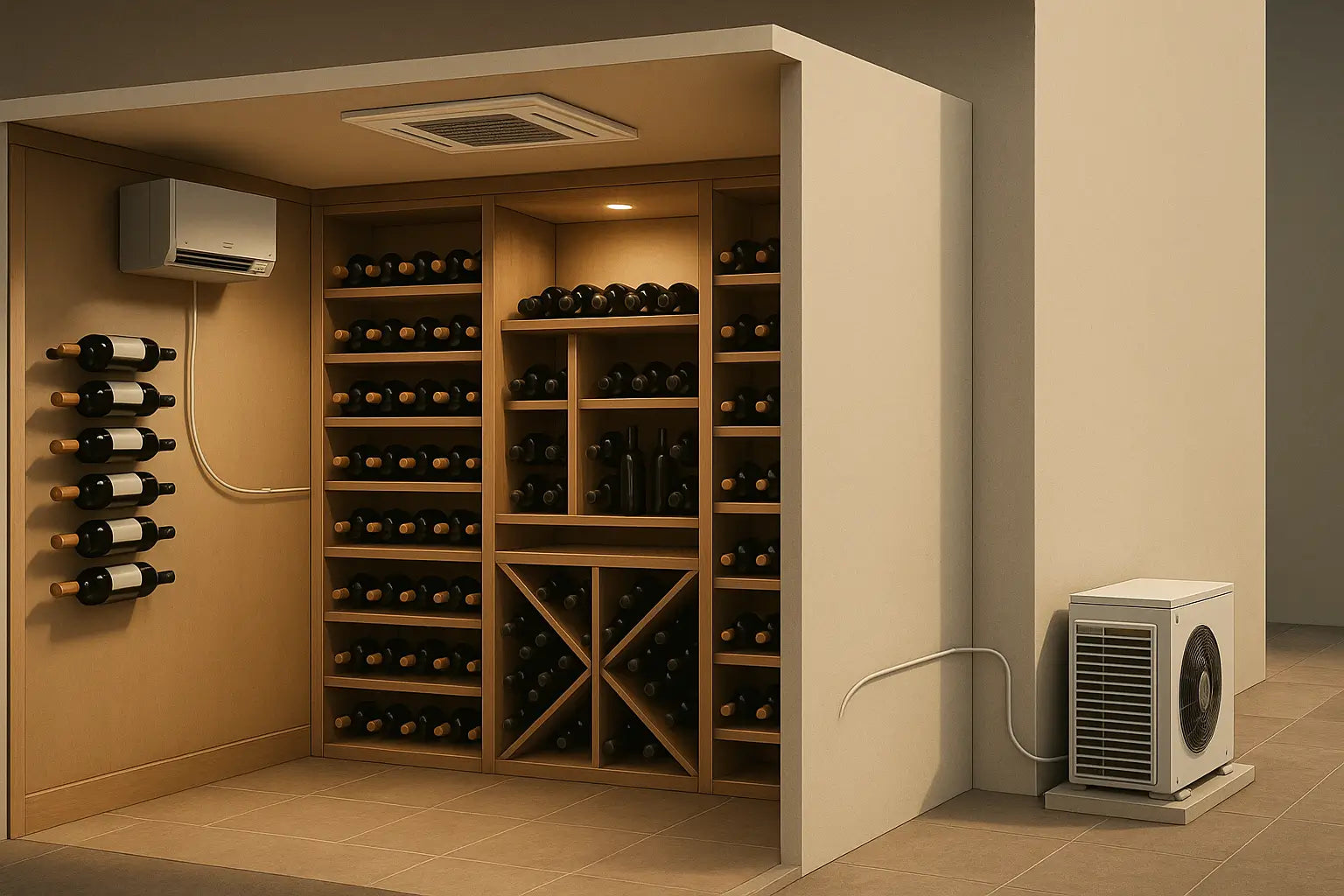
Split systems separate the condenser (outside) and evaporator (inside) to reduce indoor heat and noise. They’re highly effective for cellars in warm climates or where venting is a challenge.
➡️ Related: Ultimate guide to wine cellar cooling
👉 Case Example: A homeowner in Arizona installed a split system after struggling with high ambient heat and limited venting options. By placing the condenser outside and using a ductless evaporator inside the cellar, they achieved quiet performance and stable conditions — even through peak summer months.
Choosing between ducted, split, and self-contained systems can feel overwhelming. Each setup serves a specific purpose — from DIY builds to luxury installations. This chart breaks down the differences at a glance:
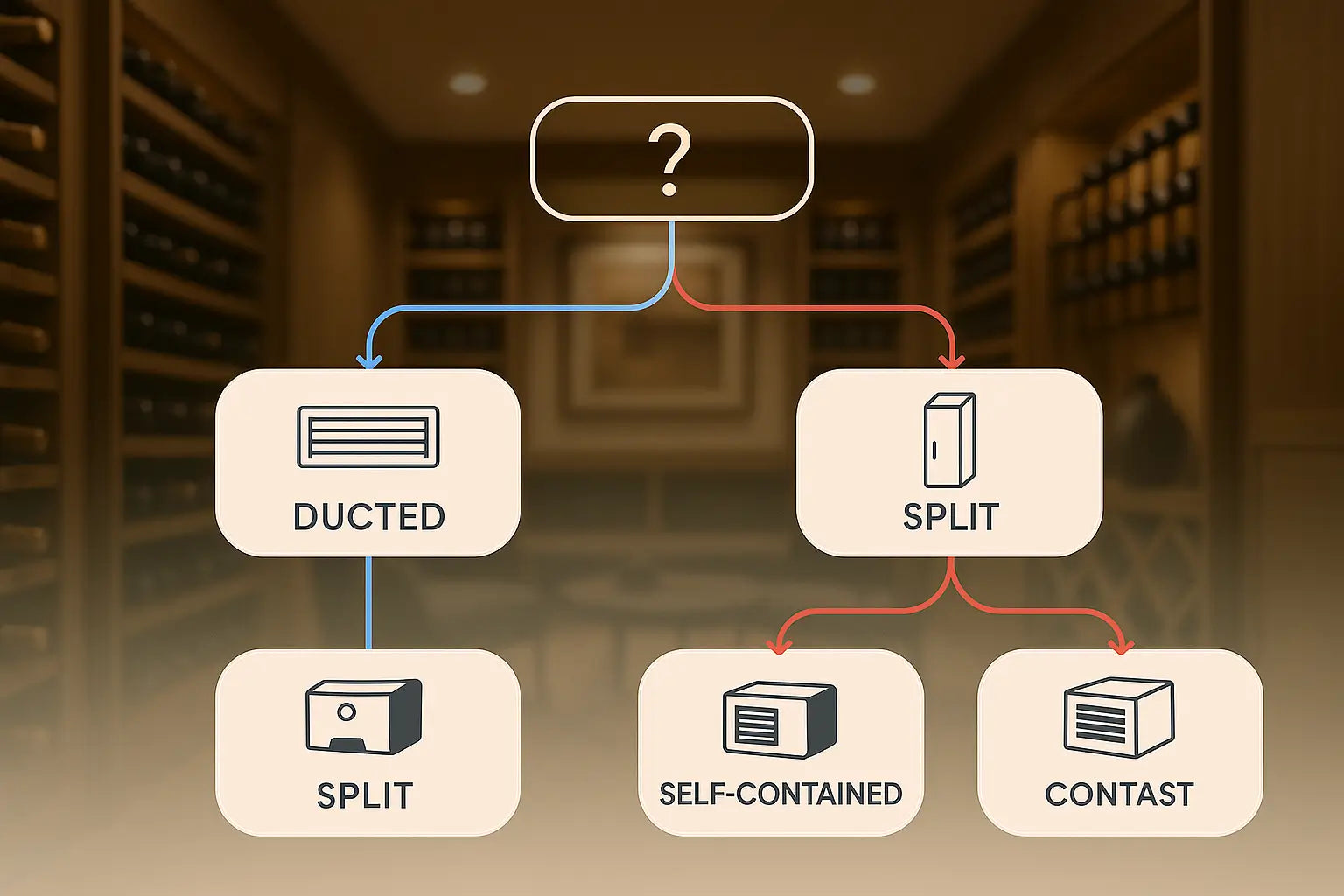
| System Type | Best For | Noise Level | Installation | Aesthetic | Price |
|---|---|---|---|---|---|
| Self-Contained | Small cellars, DIY installs | High | Easiest | Visible | $ |
| Ducted | Luxury builds, quiet preference | Very Low | Moderate | Hidden | $$$ |
| Split | Warm climates, remote condenser setups | Low | Complex | Minimal | $$$ |
Also see the Energy Star Ductless Systems Guide for more insights on split and ductless technologies.
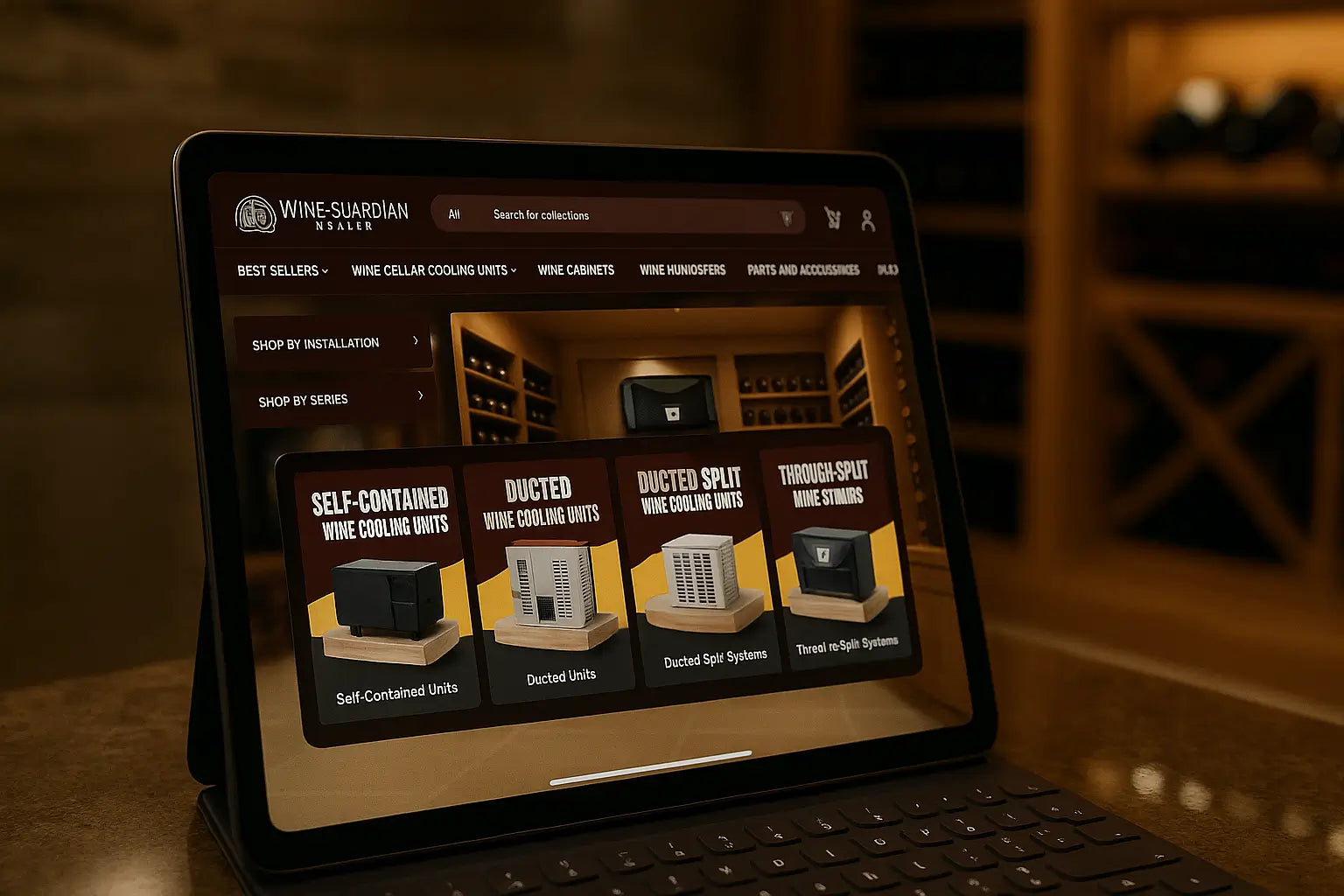
📞 Have questions? Call us at 1 (800) 949-9904 to find the ideal Wine Guardian configuration for your cellar.
📩 Or email support@wineguardiandealer.com for a FREE consultation.
As an authorized Wine Guardian Dealer, we’ll help you choose the right system for your goals — professionally.
Self-contained units often allow DIY installs. Ducted and split systems require professionals.
You can, but it may compromise aesthetics and acoustics.
Ducted systems are virtually silent inside the cellar. Split systems are also very quiet.
Yes — they typically require permits and HVAC contractors.
🛒Shop our most-loved Wine Guardian cooling systems today.
🛠️Protect your wine with the most trusted systems on the market.
❤️Tested, reviewed, and loved by serious collectors like you.